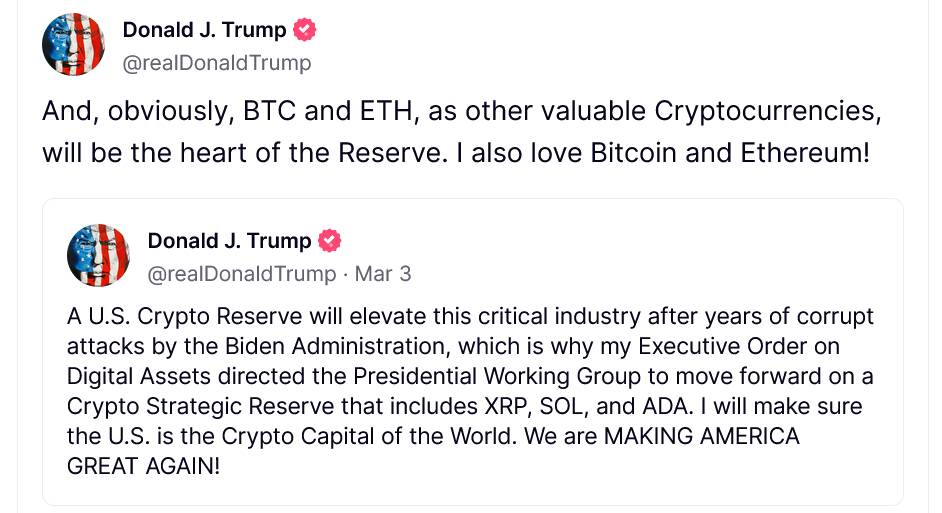As the cryptocurrency landscape continues to evolve, Layer-1 blockchain Solana is making headlines by celebrating its fifth anniversary since launching its mainnet in March 2020. Emerging during the height of the COVID-19 pandemic, Solana has swiftly established itself amongst the most active blockchain networks, recognized for its immense transaction volume and its potential inclusion in the U.S. Digital Asset Stockpile.
Since the first block was built, Solana has remarkably processed over 408 billion transactions, facilitating nearly trillion worth of value on decentralized exchanges. This rapid adoption underscores Solana’s significant role in the digital financial sector, where it has been touted as a contender to rival established platforms like Ethereum.
The journey has not been without hurdles. In 2022, the bear market, compounded by the dramatic collapse of the FTX crypto exchange, drastically affected Solana’s market position, reducing its market cap from a peak of .8 billion to around billion. Despite these setbacks, 2023 saw a remarkable resurgence, buoyed by the memecoin frenzy and driving Solana’s market cap to an impressive over 0 billion early in 2025.
Solana’s ecosystem has been lively with milestones such as the launch of its first major crypto phone, the Solana Saga, which combines a built-in crypto wallet with smartphone functionality—though early sales were slow, an airdrop of a popular memecoin revitalized interest. More innovative products, like the recently announced Solana Seeker smartphone, have also captivated the crypto community.
“Happy 5th birthday @solana! Congratulations on five years of building and shipping the greatest tech to ever grace our industry!” – @pump.dot.fun
Solana has also made strides in becoming a preferred platform for stablecoins, positioning itself right behind Ethereum and Tron. Furthermore, recent announcements confirmed that Solana would be included in the U.S. Digital Asset Stockpile, a significant endorsement of its standing in the crypto market.
However, the journey has been marred by network outages that have occasionally interrupted services. Solana plans to launch an independent validator client in 2025 to address these issues and enhance operational reliability. As the cryptocurrency community watches closely, Solana’s next steps are sure to shape its trajectory in the coming years.
Solana Celebrates Its 5th Anniversary
As Solana marks its fifth anniversary since launching its mainnet, several key developments and milestones have shaped its journey in the blockchain landscape. Here are the most important aspects:
- Launch Amid COVID-19:
Solana’s mainnet went live in March 2020, coinciding with the onset of the COVID-19 pandemic. This timing influenced its adoption and initial reception in a rapidly changing global environment.
- Rapid Growth and Market Cap Surge:
Within a short time, Solana was recognized as a potential “Ethereum killer” with its market cap reaching .8 billion during the 2020-2021 bull cycle, showcasing its rapid acceptance and deployment in decentralized finance.
- Impact of the 2022 Bear Market:
The collapse of FTX significantly affected Solana, leading to a 96% drop in market cap by the end of 2022, highlighting the volatility and interconnected risks within the crypto ecosystem.
- Comprehensive Comeback in 2023:
After facing major setbacks, Solana’s market cap surged to over 0 billion by January 2025, aided by a resurgence in memecoin popularity, marking a significant turnaround and renewed investor interest.
- Emergence of Memecoins:
The rise of various memecoins, such as Bonk and Dogwifhat, has expanded Solana’s user base and adoption, with significant revenues generated from platforms like Pump.fun.
- Introduction of Crypto Phones:
The launch of the Solana Saga and Seeker smartphones indicates an innovative approach to integrating cryptocurrency with everyday technology, appealing to a broader audience beyond traditional crypto users.
- Status as a Digital Asset Reserve:
Solana is set to be included in the Trump administration’s Digital Asset Stockpile, a move that could legitimize its position and potentially increase its value and adoption in the US economy.
These developments not only reflect the evolution of Solana but also indicate how the blockchain landscape can directly impact users’ experiences with decentralized finance, investment decisions, and technological adoption.
Solana’s Fifth Anniversary: A Milestone Analysis Amidst Market Dynamics
As Solana celebrates its fifth anniversary, it’s essential to examine not only its remarkable achievements but also the competitive landscape it navigates. Known for its high transaction speeds and low fees, Solana has established itself as a formidable contender against notable rivals like Ethereum and newer layer-1 solutions such as Avalanche and Binance Smart Chain.
Competitive Advantages: Solana’s success largely stems from its innovative Proof of History (PoH) consensus mechanism, which allows it to process over 40,000 transactions per second. This efficiency makes it a prime choice for decentralized finance (DeFi) platforms and for projects focused on high-volume transactions, setting it apart in a space crowded with legacy systems that struggle with scalability. The recent memecoin surge, propelled by a vibrant community and substantial presales of its new crypto phones, plumped up its user engagement and liquidity, allowing it to capture a significant portion of the meme-focused market.
Moreover, Solana’s inclusion in the anticipated U.S. Digital Asset Stockpile speaks volumes to its perceived value within regulatory frameworks. By being earmarked alongside cryptocurrencies like Ethereum and XRP, it underscores Solana’s rising prominence and potential longevity in the blockchain ecosystem.
Competitive Disadvantages: However, Solana is not without its vulnerabilities. The blockchain has faced numerous network outages, raising questions about its reliability in high-stakes applications. When platforms experience downtime, it also risks alienating developers and users who prioritize seamless service delivery. The ongoing scrutiny surrounding its ties to the FTX collapse could deter potential investors wary of association with failed projects and bad press.
Furthermore, while Solana’s memecoin success has attracted short-term interest, it may prove unsustainable in the long run. Projects that explode due to speculative bubbles often experience dramatic declines, which can erode user confidence and long-term investment stability.
Who Stands to Benefit or Suffer: The announcement of Solana as a part of the Digital Asset Stockpile could be beneficial for institutional investors looking to diversify their holdings in cryptocurrencies with regulatory backing. Startups and developers within the Solana ecosystem may also benefit from the increased visibility and potential funding. However, competitors, particularly those lagging in technological advancements or facing regulatory challenges, might find it increasingly difficult to compete as Solana solidifies its role within the crypto market.
Conversely, existing users and investors might experience volatility as they navigate the uncertain impacts of memecoin trends and Solana’s image associated with previous market mishaps. For cautious investors, the reliance on speculative assets could pose significant risks, particularly in the face of potential regulatory scrutiny and the pressure of maintaining a stable network. All in all, Solana’s anniversary highlights both a celebration of milestones and a reminder of the hurdles it must continue to surmount to remain competitive in a rapidly evolving market.

















